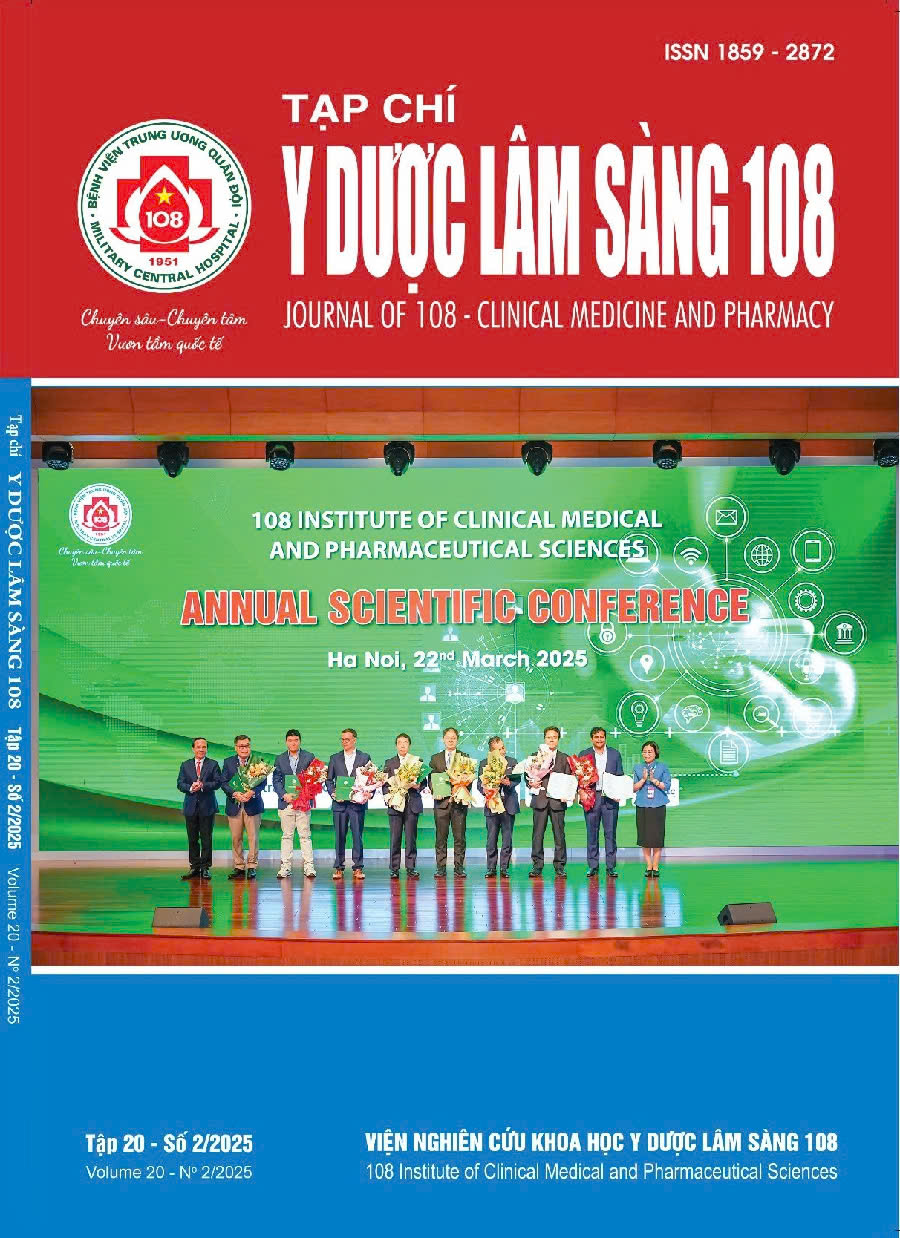Survey on adherence of the use of analgesic on dental outpatients in 108 Military Central Hospital
Main Article Content
Keywords
Abstract
Objective: To survey pain medication adherence and difficulties in outpatients after dental intervention. Subject and method: Cross-sectional study, using questionnaires through face-to-face or telephone protocols. Result: Mean age of 259 patients was 63 years; Tooth destruction was the most common dental intervention (42.8%). The majority of patients were moderate (86.1%) and mild (13.9%). The most common analgesic regimen used at the department was paracetamol alone (73.0%). The rate of patients not adherence was 23.2%; 19.3% patient descriptions were incorrect in the instructions for using medicine. The main difficulties in taking the medication the patient chooses were: Pain is a natural progression of the disease that must be tolerated, painkillers should only relieve pain, should not be used continuously even when in pain, fear of side effects when using painkillers. Conclusion: Nearly 1/5 of patients do not manually use analgesic; The main difficulties from patients in pain management after dental surgery include: The belief that painkillers should only be taken when in pain, trying to endure pain, and fear of side effects.
Article Details
References
2. Bộ Y tế (2022) Hướng dẫn chăm sóc giảm nhẹ.
3. Oral analgesics for acute dental pain (2024) American Dental Association. Accessed. https://www.ada.org/en/resources/research/science-and-researchinstitute/oral-health-topics/oral-analgesics-for-acute-dental-pain.
4. Mark AM (2024) Reducing dental pain in teens and adults. J Am Dent Assoc 155(2): 190. doi: 10.1016/j.adaj.2023.11.007. PMID: 38325971.
5. World Health Organization (2018) WHO guidelines for the pharmacological and radiotherapeutic management of cancer pain in adults and adolescents, pp.
6. Bùi Thanh Loan, Đoàn Lực, Phan Thị Quỳnh Nga, Quách Phụng Linh, Nguyễn Tứ Sơn (2022) Khảo sát việc sử dụng thuốc giảm đau và những rào cản trong quản lý đau ung thư trên bệnh nhân điều trị tại Bệnh viện K2. Tạp chí Y học Việt Nam, 508(1). https://doi.org/10.51298/vmj.v508i1.1544.
7. Oldenmenger WH, Sillevis Smitt PA, van Dooren S, Stoter G, CC van der Rijt (2009) A systematic review on barriers hindering adequate cancer pain management and interventions to reduce them: a critical appraisal. Eur J Cancer 45(8): 1370-1380.
 ISSN: 1859 - 2872
ISSN: 1859 - 2872
